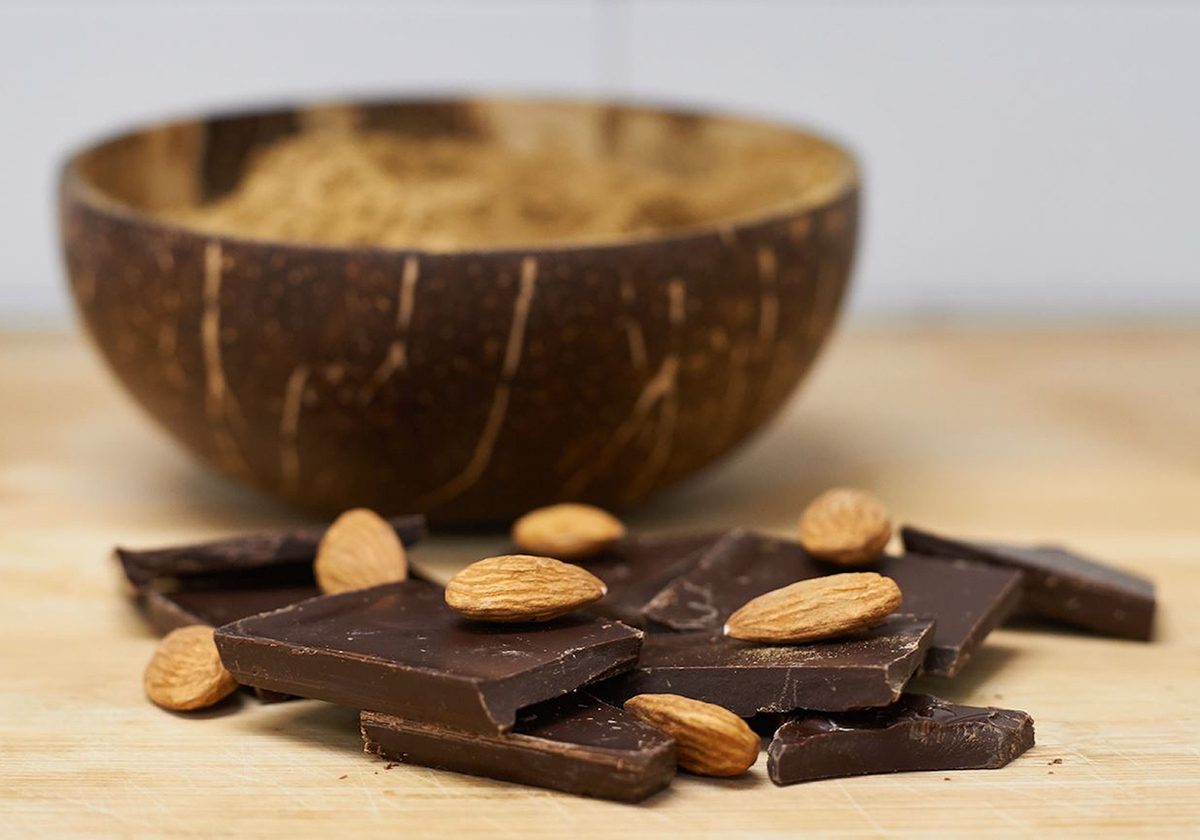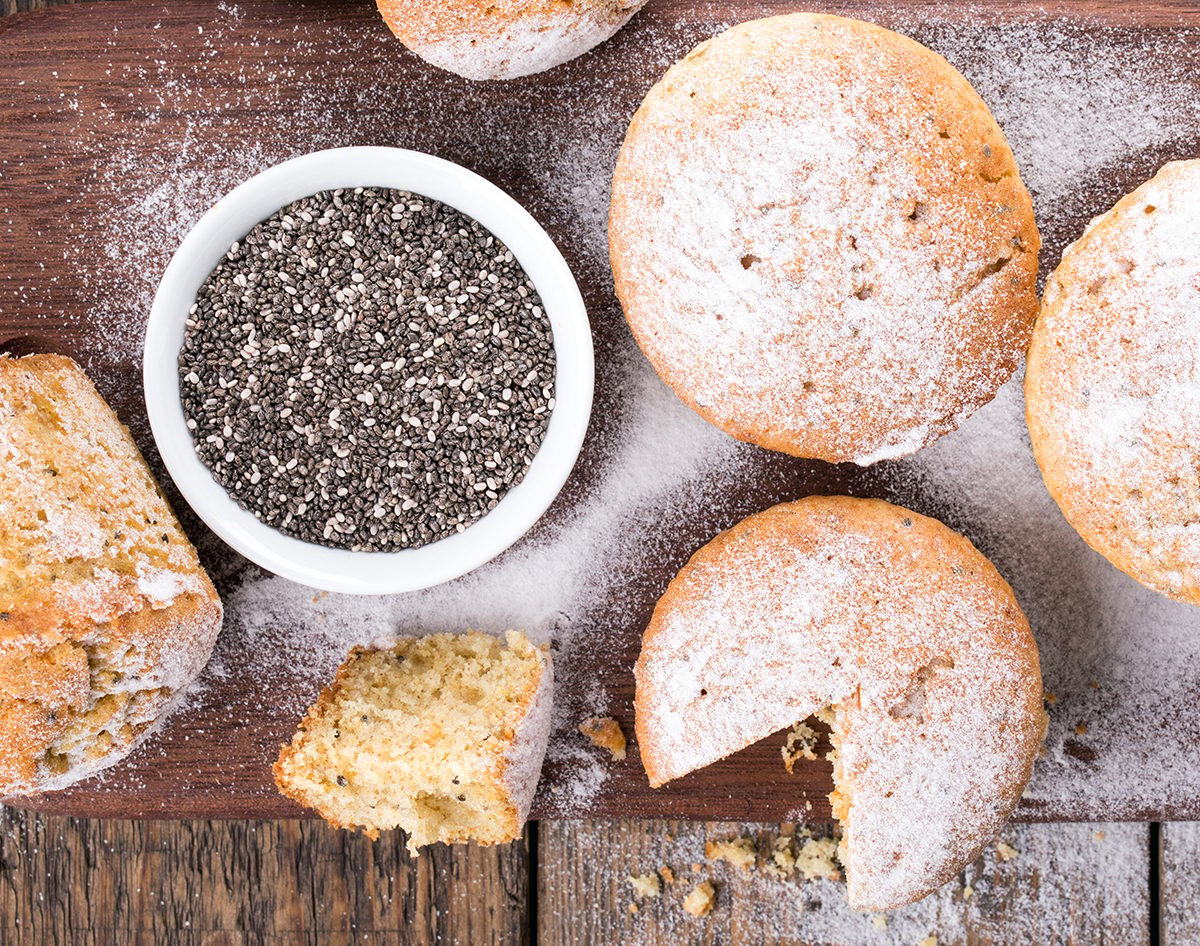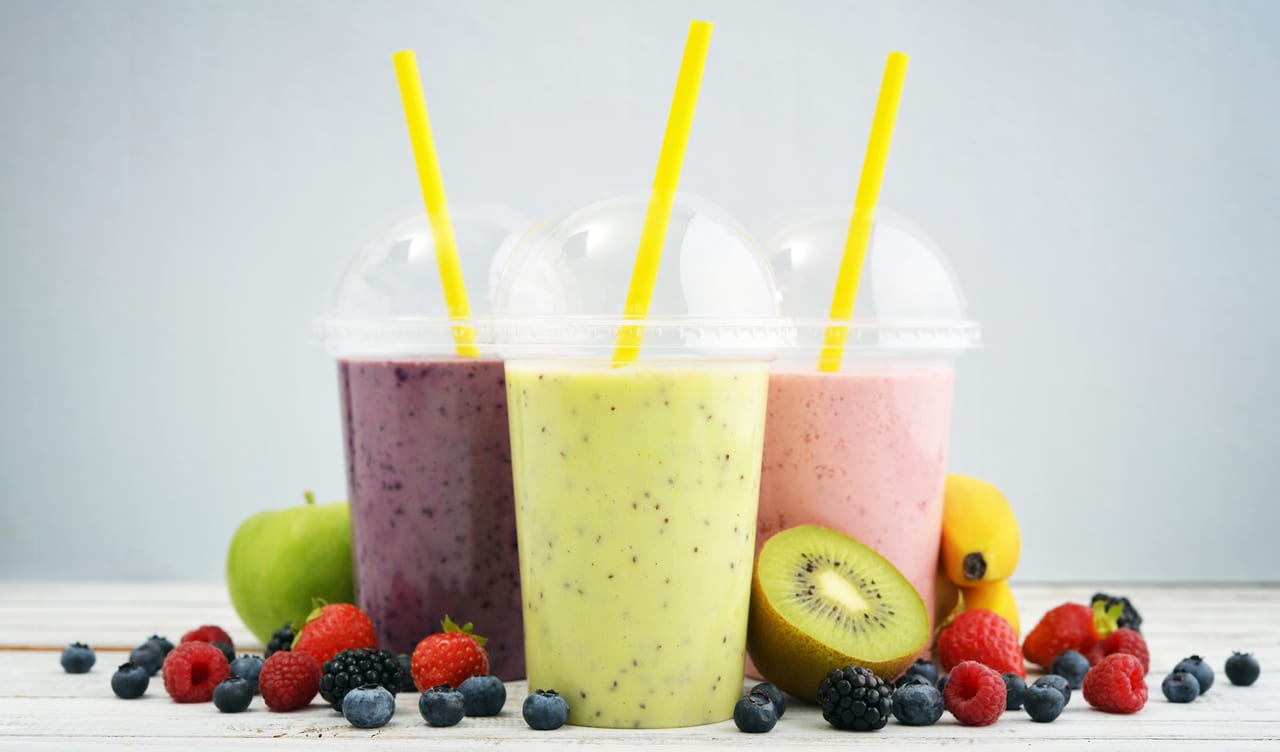Gut Health Update
BETTER FOR
you
It takes guts—healthy guts—to have good health!
By DEVON GHOLAM, PhD, Contributing Nutrition Editor
Photo courtesy of: Getty Images / Sol Stock ;
The global digestive health market is forecast to hit nearly $60B by 2025, according to a 2020 report by Fior Market Research, LLP. As scientific evidence continues to build in support of gut health’s impact on other bodily functions and systems, ingredients that boost digestive health remain at the forefront of new product development.
Ingredients that affect gut health are characterized as prebiotics, probiotics, synbiotics, and newly defined “postbiotics.” Ongoing research is elucidating the mechanisms by which these ingredients confer health benefits, demonstrating how trending ingredients such as fiber affect the gut microbiome on a molecular level, by interaction with microorganisms either directly or within intestinal cells.
The gut microbiome is linked to myriad facets of health. In fact, low diversity of gut microbiota is associated with higher risk of multiple diseases, especially gastric and colorectal cancers. Meanwhile, positive modulation of the composition of this microbial community has been linked to various health benefits, including improved chemotherapy response in cancer patients, reduced symptoms of digestive diseases other than cancer, and therapeutic options for treating depression and Alzheimer’s disease. Recent research even suggests the gut microbiome could affect the severity of symptoms associated with COVID-19.

While the growing interest in immunity and health has driven much of the recent research into the role digestive health and a thriving microbiome play in our physiological well-being, the “food and mood” paradigm has focused on what is called the “gut-brain connection.” The effect of digestive health on emotional and cognitive performance has resonated strongly with consumers and has driven demand for all ingredients that promote the health of our gastrointestinal organs.
What’s New
While fibers and probiotic bacteria are certainly well-known agents of a healthy gut, the wealth of research coming out has cast light on some unexpected ingredients that support a healthy digestive tract. Product developers targeting this rapidly growing category can now expand the number and types of foods and beverages in their digestive maintenance portfolio.
Aged black garlic is a “new” food introduced from Asia in the last decade. While it has been well-known in the East for centuries, its traditionally accepted health benefits are being confirmed in research labs. It is a long-fermented form of garlic, undergoing specific conditions of high humidity (85%) and low heat (140°-190°F) for up to several months.
Active probiotics in plant-based dairy analogs have become especially popular among consumers preferring plant-based options without eschewing yogurt. Photo courtesy of: The Icelandic Milk & Skyr Corp./Siggi’s Dairy

The importance of probiotics for kids inspired development of hardy strains like Bacillus subtilis, that survive bars, gummies, snacks, fruit and veggie pouches, and even pancake mixes. Photo courtesy of: Deerland Probiotics & Enzymes, Inc.

The friendly bacteria that ferment the garlic turn it black, and subsequently, the typical strong garlic odor and flavor is replaced by a savory, caramel-like sweetness. Black garlic has been purported to have anti-inflammatory, anticancer, and antioxidant properties, and it also has demonstrated a potential to increase gastrointestinal motility, according to in vitro studies.
Researchers in Taiwan recently reported that black garlic extract showed protective effects against acute hepatic (liver) injury in one animal study. Other research suggests that the use of probiotic strains, such as Lactobacillus, could prove useful in black garlic fermentation, adding an extra component of gut support.
Here’s to your health
Beer is rarely thought of as a promoter of gut health. But as the most globally consumed fermented beverage, it typically contains phenolic compounds from barley and hops that have been noted as increasing populations of several beneficial bacteria genera, including Bifidobacterium and Lactobacillus. Bifidobacterium can inhibit the growth of pathogens, while Lactobacillus is perhaps the best-known probiotic generafor helping regulate immunological functions and mitigate intestinal inflammation.
A welcome trend in foods for digestive health is to include both the probiotic bacteria and the prebiotic fibers they eat. Photo courtesy of: Welch’s Foods, Inc.
Love Your Liver
The liver is the metabolic powerhouse of the human body, and recent findings revealed a pivotal connection between it and the gut, termed the gut-liver axis or liver-microbiome axis. Tapping into the gut microbe community could aid in treatment of hepatic diseases, such as non-alcoholic fatty liver disease or autoimmune hepatitis. Recent research in China established optimal biomarkers in the gut microbiome to potentially diagnose hepatocellular carcinoma (globally, the third leading cause of death from cancer). Another study showed that a similar process could be used to monitor the status of autoimmune hepatitis.
A recent study showed positive changes in gut microbe population after just one month of beer consumption, and that applied to both alcoholic and nonalcoholic varieties. Nonalcoholic beer consumption also was associated with a decrease in fasting blood glucose levels, an effect also attributed to polyphenol and phenol compounds. The phenolics found in beer have demonstrated positive health benefits in mice and anticancer activity in in vitro studies with human cancer cell lines, although this relationship still needs to be investigated in clinical trials.
Clinical trials on the health benefits of other fermented foods, such as kombucha and kimchi, are still underway, but sauerkraut has shown promise in the field of gut health. Results of a small clinical trial suggested that regular ingestion of sauerkraut fermented with lactic acid-producing bacteria reduced severity of symptoms in patients with irritable bowel syndrome. Additionally, sauerkraut is being studied as a source of probiotics. Researchers in India identified three strains of Lactobacillus with health-promoting properties in the popular fermented cabbage product, with evidence that the strains inhibited growth of pathogenic Listeria monocytogenes bacteria.

Upcycling for better sustainability has allowed for the reclamation and purification of nutrients like the prebiotic plant fiber, arabinoxylan. Photo courtesy of: Comet Biorefining, Inc.

Fermented foods, like kimchi and kombucha, have been trending as culinary favorites, but research has shown them to also have gut health capacity. Photo courtesy of: Chi Kitchen, LLC
Probiotics still tops
Although many probiotic strains are well established, new beneficial strains are emerging as research continues in this fascinating field of study. One example is Akkermansia muciniphila. The abundance of A. muciniphila in the gut is suggested to be lower in adults with higher BMI, higher LDL cholesterol, and higher fasting glucose levels than in healthy subjects. This microbe also seems to be associated with improved insulin resistance.
Metformin, a medication commonly used in the treatment of type 2 diabetes, increased Akkermansia populations in obese mice treated with the drug. Polyphenols also increase the presence of this bacteria. A recent study in mice showed A. muciniphila decreased severity of dextran sulfate sodium-induced colitis as well as colitis that is associated with cancer via immune response.


The future of gut health will likely head toward an individualized approach based on gut microbiome characterization that could be used in disease management and health optimization.

New studies also demonstrate the efficacy of Bacillus subtilis strains as a probiotic. One strain in particular, DE111, showed measurable positive changes in the gut microbiome in children 2-6 years of age. Bacterial strains associated with inflammation reduction were increased in children receiving a probiotic supplement over eight weeks. Another study in healthy adults showed that supplementation with the DE111 strain over four weeks resulted in positive changes in cholesterol levels and improved endothelial function.
Spruce up your fiber intake
To the wealth of beneficial fibers known, add galactoglucomannans (GGM). The most abundant hemicellulose in softwood, it’s a fiber source that can be sustainably produced from wood biomass. Spruce GGM has recently been investigated for health benefits and functional properties. This novel ingredient shows great promise as an emulsion stabilizer.
The combination of bioactive fibers, protein, and lipids in chia seeds provide digestive support to a variety of baked goods. Photo courtesy of: Functional Products Trading, SA/Benexia
An in vitro study conducted in Finland last year found that GGM emulsions remained stable until reaching intestinal conditions, thus exhibiting potential as a delivery mechanism for lipophilic bioactives. Phenolic residues associated with GGM also were shown to aid in emulsion stabilization and prevent lipid oxidation.
GGM could also serve as a prebiotic fiber, as demonstrated via its fermentability by Bifidobacteria. Additionally, changes in the gut microbiome due to GGM are believed to have other health implications. A recent animal study showed that chronic prostate inflammation (CPI) coincided with changes in gut microbiome composition and that GGM ingestion could lessen such changes. Thus, it’s possible that GGM could ameliorate the symptoms of CPI.
Look for the syn-post
“Synbiotic” ingredients are the new kids on the digestive health block, arising as a logical follow-up to discoveries about the synergies of the microbiome. As a field, synbiotics is the art of pairing the best probiotics with their “favorite food” prebiotic fibers. The research is still in its infancy, as there are hundreds of each to match up.

Studies of prebiotic fibers and gums traditionally used as hydrocolloids are revealing prebiotic power. Photo courtesy of: ISI Gums, Inc.
“Postbiotics” are emerging as the next set of ingredients aimed at gut health. As recently defined by the International Scientific Association for Probiotics and Prebiotics (ISAPP), postbiotics are “a preparation of inanimate microorganisms and/or their components that confers a health benefit on the host.” Simply put, they are the “leftovers” of probiotics that demonstrate possible functional benefits.
Postbiotics that have been studied to date include metabolites of Lactobacillus plantarum, which demonstrated cytotoxic effects in vivo against several types of cancer, and a protein secreted by Lactobacillus rhamnosus-GG that could help improve function of the intestinal barrier.
Another postbiotic that has been studied in the last decade is the fermentate of Saccharomyces cerevisiae. Powder from this well-known yeast contains several compounds of significance, including cell fragments, micronutrients, metabolites, peptides, and phenolic compounds. A pilot study in individuals with constipation showed the ability of yeast fermentate to affect the gut microbiome and reduce symptoms associated with constipation.
With new ingredients arising almost daily from research into the ingredients that boost digestive health, food and beverage makers can carve out their own unique niches in better-for-you products in this booming category. With the correct labeling and marketing, according to regulatory rules, digestive health foods and beverages are destined to become natural choices for all consumers. PF
Devon Gholam, PhD, received her doctorate in food science from Purdue University. She is a food scientist with extensive experience in product development and research, including food product design, formulation/reformulation, sensory methodology, statistical analysis, experimental design, and analytical techniques such as HPLC, GC, and FTIR. She has worked for such food and ingredient companies as Roquette America Inc., Ganeden Biotech Inc., and Kellogg Co. In addition to product consultation, she also provides technical support, communications, presentations, white papers, and other food and ingredient marketing tools. Reach her at dld@devonlynndurkee.com.
September 2021
